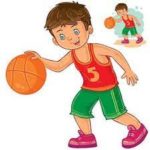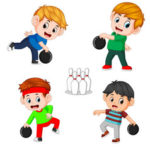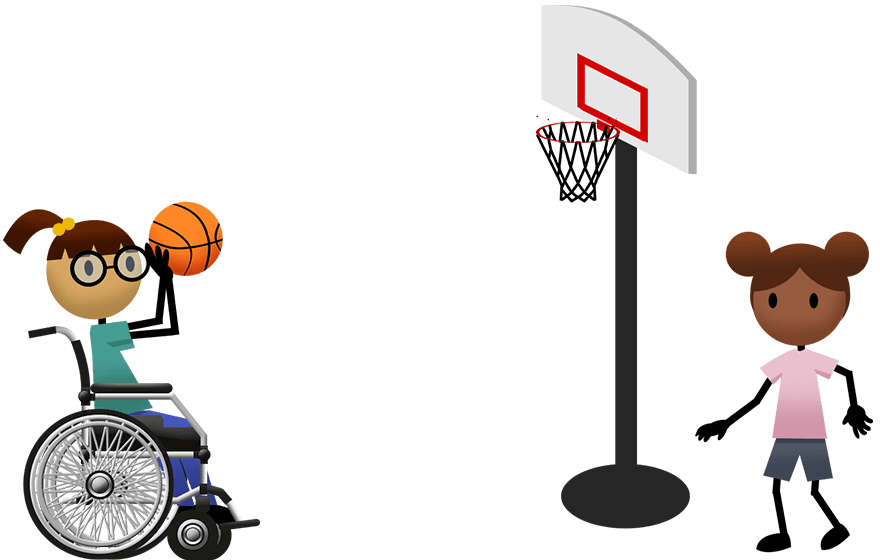
by Rashmi Sharma | Apr 17, 2020 | Fitness Activity
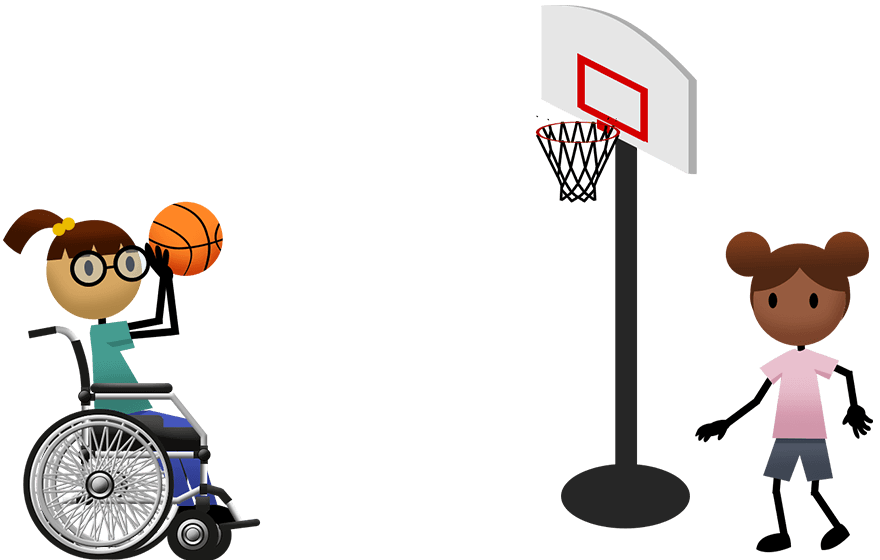
Requirements
- Gymnasium or outdoor space with hard ground surface, basketball hoop, lightweight basketball or volleyball for young children, standard basketball for older children and teens.
Instructions
- Working with a partner or small group, take turns shooting for one minute, and see how many baskets you can score in that time.
- Partners who are not shooting are responsible for rebounding the ball for the shooter.
Variations
- If you want to make shooting easier, try using a lighter ball (e.g. volleyball).
- For extra challenge, try to shoot while moving.
Benefits
This activity develops throwing skills together with core strength.

by Rashmi Sharma | Apr 17, 2020 | Fitness Activity
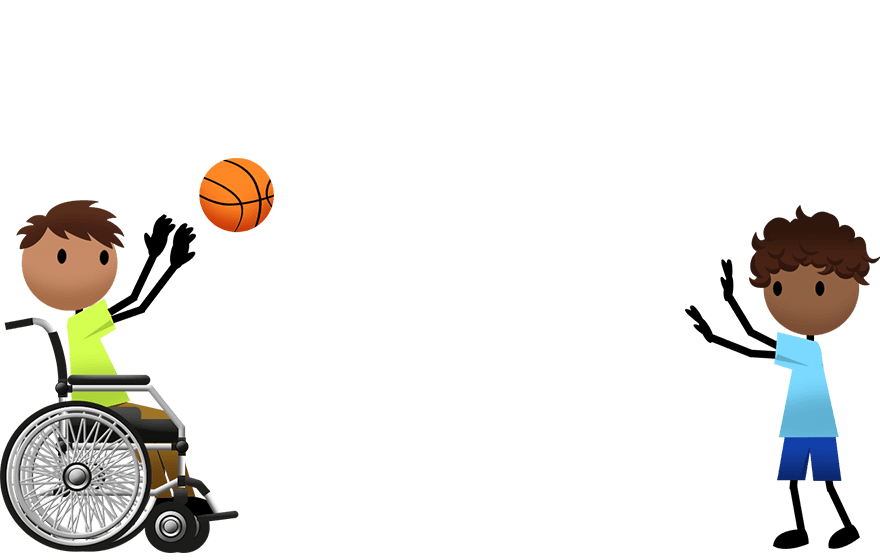
Requirements
- Gymnasium or outdoor space with hard ground surface, lightweight basketball or volleyball for young children, standard basketball for older children and teens.
Instructions
- Child in a wheelchair passes back and forth with another child or adult.
- Start 2 metres apart and then move farther apart when more challenge is desired.
- Practice throwing one-handed, and practice throwing two-handed (e.g. two-handed overhead pass, two-handed chest pass).
Variations
- This activity develops throwing and catching skills together with core strength.
If you want to make passing easier, try using a lighter ball (e.g. volleyball).
- For extra challenge, try to pass and catch while moving.
Benefits
This activity develops throwing and catching skills together with core strength.
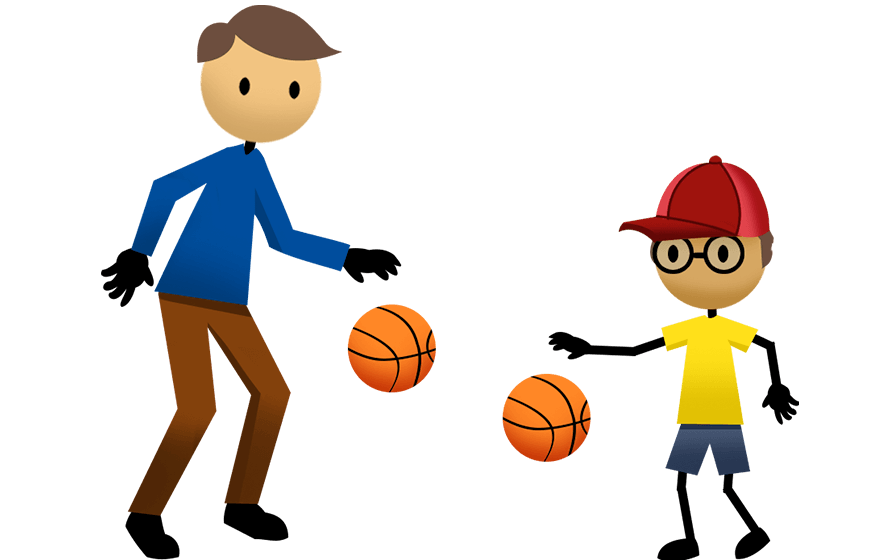
by Rashmi Sharma | Apr 17, 2020 | Fitness Activity

Requirements
- Open space with hard pavement (concrete or asphalt)
- A basketball or large bouncy ball (appropriately sized for your child)
Instructions
- Dribbling means bouncing a ball continuously with the palm and fingers of the hand.
- Show your child how to do a two-handed dribble (both hands contact the ball at the same time).
- Show your child how to do right- and left-handed dribble. One hand will be more difficult depending on whether your child is left-handed or right-handed.
- Practice all three dribbles.
- Play a mirror game: when you dribble with your left hand, so must your child. Vary the dribbles, speed, height and other factors to make the game fun.
Variations
Try the mirror game with your child leading
Benefits
This activity develops hand-eye coordination, balance, and rhythmical movement.

by Rashmi Sharma | Apr 17, 2020 | Fitness Activity

Requirements
- Open outdoor space
- Regulation baseball or children’s softball (10 inch and 11 inch)
- Standard leather baseball gloves
Instructions
- In an open area without obstructions, throw gently overhand and play catch with your child.
- Start with short distances such as 3-5 metres apart.
- Increase to longer distances of 8-10 metres as your child’s catching improves.
- Show your child how to stand ready, with glove in the air, feet slightly apart, and ready to move side-to-side to catch.
Variations
- Increase the speed and force of your throws only as your child gains confidence and consistency in catching
- Try using an object as a “home plate” (e.g. jacket, sweater, piece of cardboard or wood) – stand behind it and encourage your child to “pitch” accurately to you from 10-12 metres away
Benefits
This activity develops coordination of arms and torso, fine motor control, and the ability to “read” distances. These skills transfer to sports and activities that involve throwing an object accurately over a perceived distance (e.g., balls, frisbees, ribbons, sticks, batons).
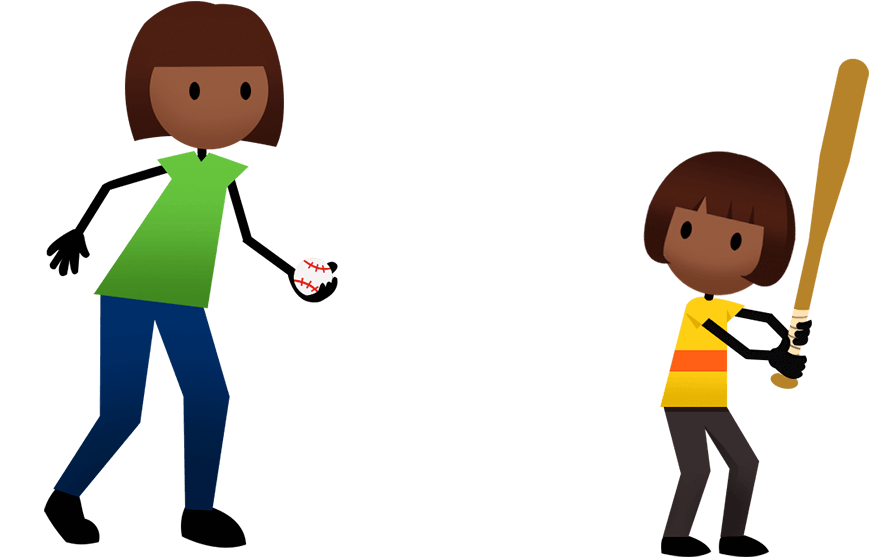
by Rashmi Sharma | Apr 17, 2020 | Fitness Activity
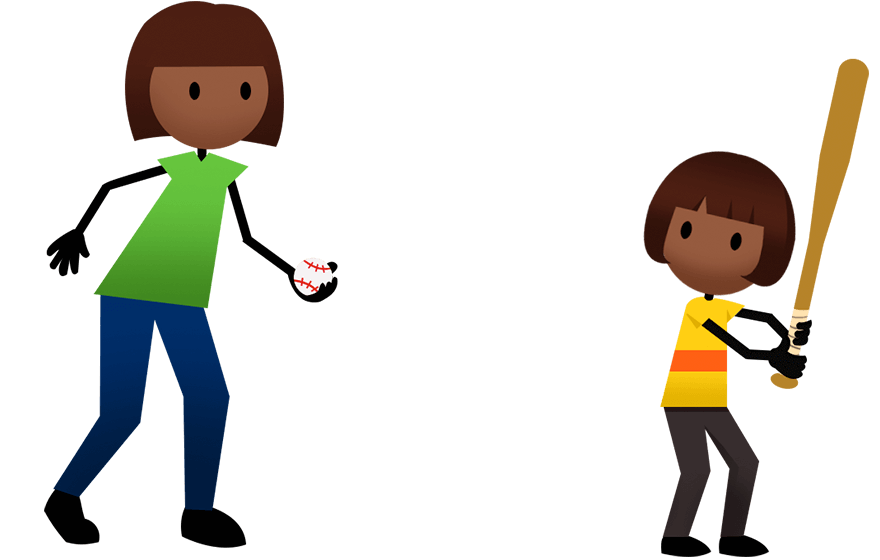
Requirements
• Open and flat outdoor space at least 25m by 40m
• Store-bought plastic baseball bat and ball
Instructions
- Purchase a lightweight plastic baseball bat and ball from a toy store.
- Find a large, open outdoor space free of trees and obstacles.
- Toss the ball softly underhand to your child so they can practice hitting.TIP: Make sure your child stands sideways. One foot should be closer to you than the other.
TIP: If your child is right-handed, they should have their left foot closer to you and left hand on the bottom of their grip.
TIP: If your child is left-handed, they should have their right foot closer to you and right hand on the bottom of their grip.
TIP: Toss the ball between their waist and their shoulders.
TIP: The ball should pass between 40-60 cm away from your child.
TIP: They should stand ready with the bat held behind them at shoulder height.
Variations
• As your child’s batting improves, increase the speed of your toss.
Benefits
This activity develops hand-eye coordination and timing while using a bat (i.e., striking tool). These skills also transfer to striking with a racquet or stick.












